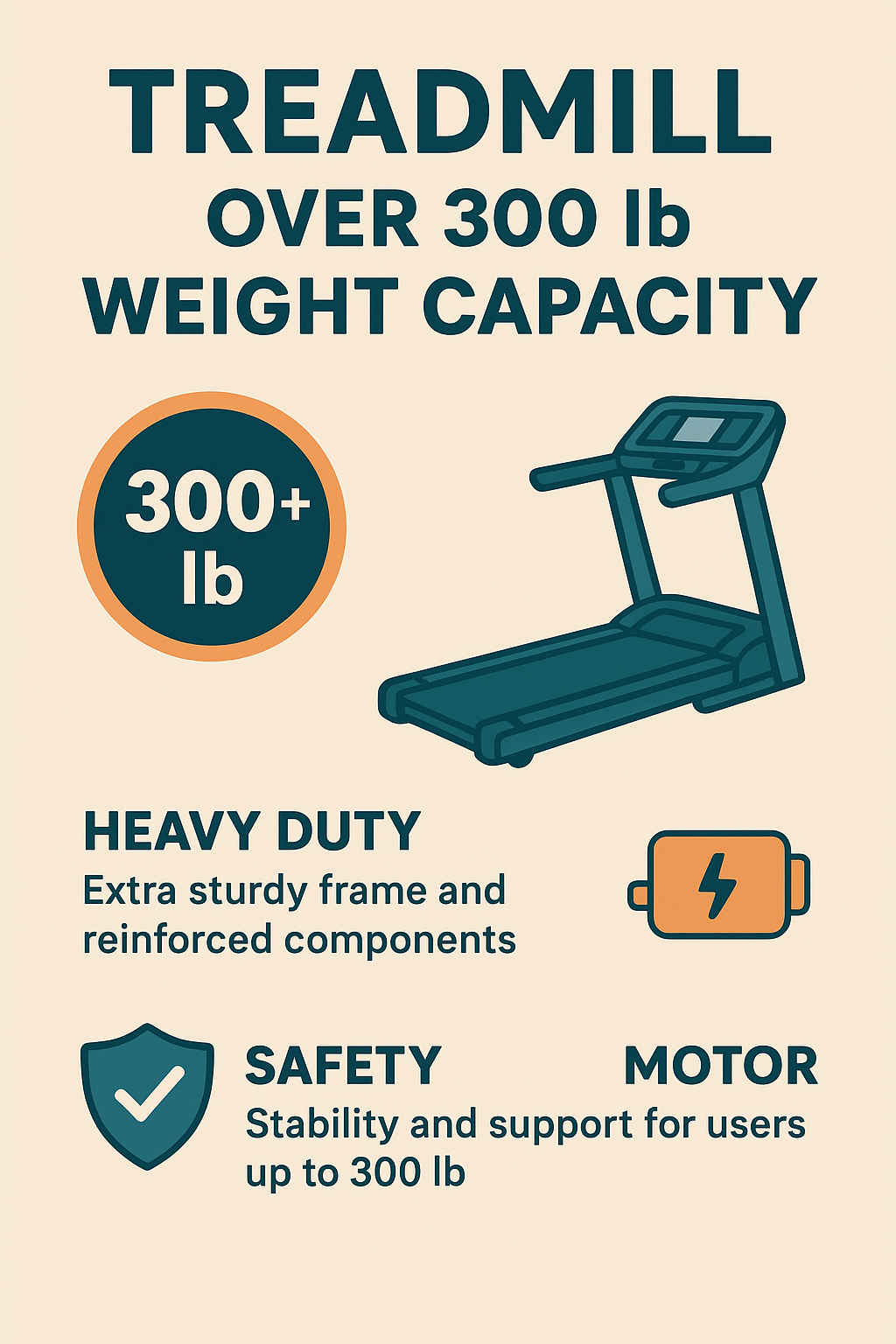
Treadmill Over 300 lb Weight Capacity: Strong, Stable, and Built to Last
Share
Q: Why choose a treadmill over 300 lb weight capacity?
A: Heavier-duty treadmills offer stronger support, smoother belt motion, and longer lifespan — ideal for users who need extra stability or durability.
Quick Note: According to the American Heart Association, adults should aim for at least 150 minutes of moderate aerobic activity per week, so choosing a reliable treadmill helps make that goal safer and more sustainable.
Today’s fitness equipment is becoming more inclusive, and treadmills are leading the charge. Models designed with a weight capacity over 300 lb open doors for more users to train confidently at home. These machines aren’t just stronger — they’re smarter, quieter, and engineered to last through years of daily use. In fact, a 2021 study found that treadmill exercise can maximize fat oxidation compared to some other modalities — a useful point when designing cardio workouts.
Why Weight Capacity Matters
Weight capacity reflects the treadmill’s structural strength.

For users near or above 300 lb, this specification is crucial. It impacts everything from belt performance to motor endurance. The Harvard Health Publishing notes that choosing sturdy cardio equipment is essential for joint safety and reliable exercise progression.
Moreover, clinical researchers and institutes such as the National Institutes of Health stress the importance of validated and well-maintained exercise equipment when used in research or clinical settings to avoid measurement errors and protect participant safety.
Key Features to Consider in Heavy-Duty Treadmills
1. Motor Power
A treadmill’s motor drives performance under load. For heavier users, look for at least a 3.5 – 4.0 continuous horsepower (CHP) motor. Stronger motors prevent lag, overheating, and belt hesitation — common issues when treadmills are pushed near their limits. For clinical and training standards on exercise equipment and testing, refer to the AHA's exercise standards. (AHA scientific statement)
2. Frame and Deck Construction
- Steel frames and wide uprights reduce wobble and increase console stability.
- Thick running decks (1.5 – 2 inches) help resist bending or noise under impact.
- Large rollers (2.5 inches or more) promote smoother belt movement and less wear.
- Welded structural joints and reinforced cross-bracing help dissipate dynamic load without fatigue.
3. Belt Size and Cushioning
A spacious belt — ideally 20–22 inches wide — provides room to walk or run naturally. Adjustable cushioning systems help absorb impact and protect joints, making long workouts more comfortable and safer. The Mayo Clinic emphasizes that surface cushioning and exercise intensity both matter, especially for users with higher body weight or joint stress.
4. Warranty and Maintenance
Extended warranties signal confidence in a treadmill’s build quality. Seek at least 10 years (or lifetime) on the frame and 5 years on the motor and deck. Regular lubrication and belt alignment further ensure consistent performance. Clinical practice points for exercise stress testing also emphasize calibration and maintenance to preserve reliable output and safety. (ASNC practice point PDF)
Spotlight on FAMISTAR Heavy-Duty Treadmills
For buyers looking for a reliable treadmill over 300 lb capacity, FAMISTAR stands out with models designed specifically for strength and stability. Each unit is tested under high stress to guarantee consistent performance across weight ranges. Highlights include:
- High weight capacity models rated up to 350–400 lb
- Commercial-grade motors (3.5 – 4.5 CHP) for sustained heavy use
- Reinforced steel frames and extra-wide running surfaces
- Advanced cushioning systems for comfort and joint protection
- Comprehensive warranty support and responsive service
FAMISTAR’s focus on robust engineering makes it a strong choice for users who prioritize long-term durability without compromising performance or comfort.
Tips for Getting the Most from Your Treadmill
- Keep your treadmill on a level, shock-absorbing mat to reduce frame vibration.
- Lubricate the belt every 3–6 months to maintain smooth movement.
- Check and tighten bolts and fasteners periodically.
- Avoid running continuously at top speed for long sessions — vary intensity to preserve motor life.
- Periodically verify belt alignment and roller tension per manufacturer guidelines or using laser alignment tools.
Frequently Asked Questions
Do I need a treadmill with a weight capacity above my current weight?
Yes. A safety margin of at least 20–30 lb ensures better performance and minimizes long-term wear on the belt and motor. This conservative buffer is recommended in engineering best practices to accommodate dynamic loading beyond static body weight.
Is it okay to buy a foldable treadmill if it supports 300 lb?
Yes, as long as the frame is reinforced. Many high-capacity foldable treadmills include hydraulic assist for easier lifting and storage. Just ensure hinges and joints are rated for dynamic stresses over time.
How often should I service a heavy-duty treadmill?
Light home users can schedule maintenance once a year, while frequent runners should check belt alignment and lubrication every few months. Clinical overviews of exercise stress testing also recommend periodic verification and calibration of treadmill output. (overview)

